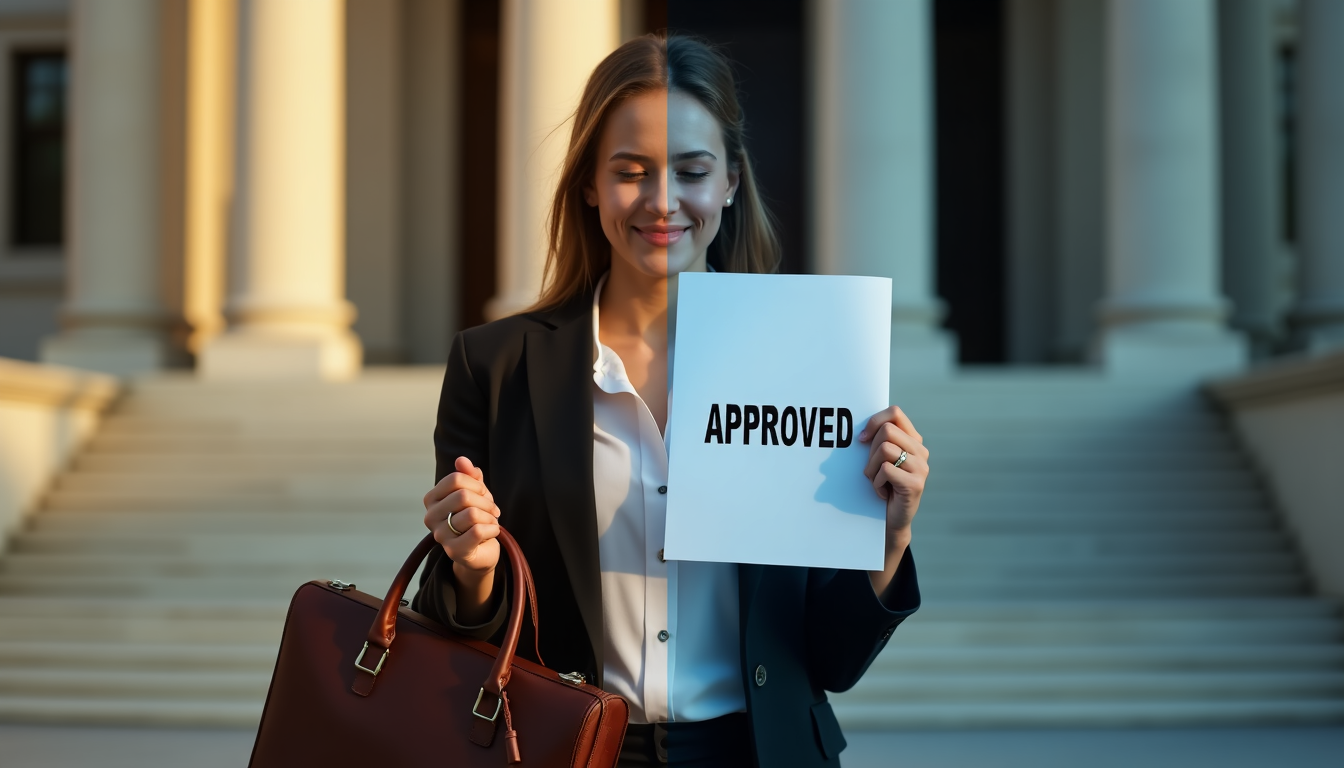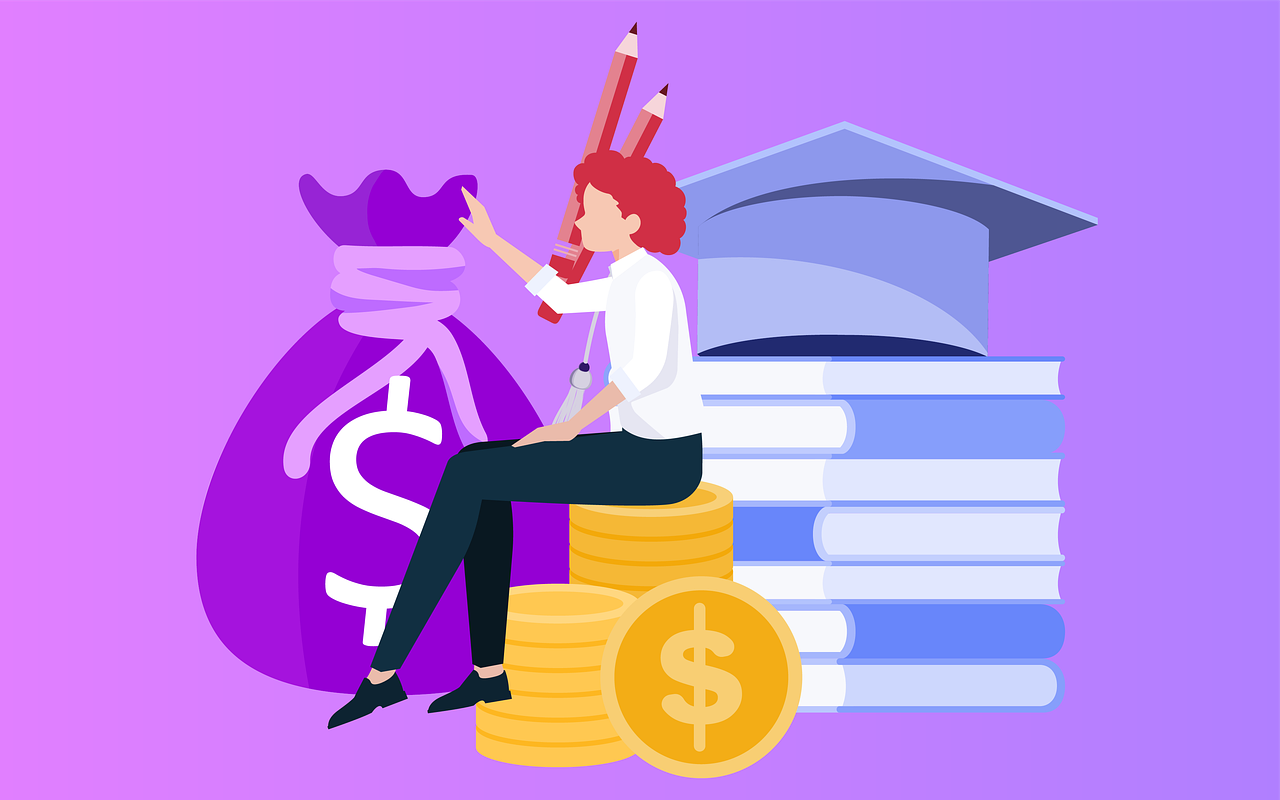Now Reading: Legal Experts: Student Loan Forgiveness Reversal Under Trump Faces Key Hurdles
-
01
Legal Experts: Student Loan Forgiveness Reversal Under Trump Faces Key Hurdles
Legal Experts: Student Loan Forgiveness Reversal Under Trump Faces Key Hurdles

Student loan forgiveness reversal concerns many of the 4.6 million borrowers who got relief during Biden’s administration. The government has taken bold steps and eliminated over $180 billion in student loan debt through programs like Public Service Loan Forgiveness and borrower defense claims.
Some borrowers worry about future policy changes, but legal experts say overturning approved loan forgiveness would be nearly impossible. Past cases show that student loan forgiveness sticks once approved. A U.S. district judge called the forgiveness’s effects “irreversible,” which means approved relief stays permanent. Many ask if their forgiven student loans will remain that way. The answer appears to be yes. Legal records show reversals happened only when officials found clear fraud or mistakes, not because policies changed. Legal scholars maintain that loan forgiveness, once granted, remains permanent except in rare cases of proven fraud.
Legal Experts Dismiss Possibility of Forgiveness Reversal

Image Source: https://pixabay.com/
Legal scholars reject the idea that can student loan forgiveness be reversed after official approval. Multiple layers of protection exist through court precedents and legal frameworks that safeguard borrowers with discharged debts.
Courts affirm forgiveness is final and irreversible
Court filings and rulings consistently support the permanent nature of student loan forgiveness. Republican-led states challenging President Biden’s SAVE plan admitted in their legal brief that “one cannot unscramble this egg; loan forgiveness has an ‘irreversible impact.'” This admission from the challengers reinforces the legal agreement about finality.
The 8th Circuit Court of Appeals backed this principle and stated that “the states cannot turn back the clock on any loans that have already been forgiven”. Federal court judges ruled they could block future forgiveness but couldn’t undo what was already granted.
Some borrowers faced forgiveness reversals due to processing errors rather than policy changes. MOHELA, a loan servicer, reversed Public Service Loan Forgiveness (PSLF) discharges because of “incorrect dating information on PSLF employment certification forms.” In spite of that, these rare cases affected all but one of these borrowers approved for student loan forgiveness.
Experts cite promissory note protections and due process
The Master Promissory Note (MPN) acts as a binding contract that clearly states forgiveness provisions. Legal experts point to these contractual protections as a key barrier against retroactive reversal. The MPN lists conditions for loan discharge, which creates contractual rights that no one can revoke unilaterally.
Borrowers with forgiven loans would have several legal claims if anyone tried to reinstate their debt:
- Breach of contract claims based on the promissory note terms
- Detrimental reliance claims if borrowers made major financial decisions (buying homes, changing employment) based on loan forgiveness
- Due process violations, as retroactive removal of loan forgiveness would likely violate constitutional protections
Student loan legal experts highlight a consistent pattern. New forgiveness program changes by administrations or Congress applied only to new borrowers, which protected existing participants. The first Trump administration officials suggested ending PSLF, but that would have affected only new borrowers—not those already working toward forgiveness.
Trump Administration Faces Legal Barriers to Reversing Forgiveness
The U.S. government’s structure makes it next to impossible to reverse. Can student loan forgiveness be reversed if Trump returns to office? Borrowers whose debts have been cleared enjoy protection from multiple legal frameworks. These safeguards create a strong defense against any attempts to undo the forgiveness.
Statutory programs require congressional repeal
Congress created programs like Public Service Loan Forgiveness (PSLF) in 2007. A president’s actions alone cannot eliminate these programs. Trump’s team learned this lesson during his first term when they tried to end PSLF. Their attempts failed because “only Congress has the authority to repeal them.” This shows why any student loans forgiven through these programs stay protected. Any new administration would need Congress to pass fresh laws to bring back forgiven debts.
Regulatory changes cannot apply retroactively
The Department of Education can change or remove regulations for forgiveness programs but faces strict limits. The formal rulemaking process “can take up to a year”. The law also resists applying new rules to past cases. A student loan expert told The New York Times about this “presumption against retroactivity” in administrative law. This gives more security to borrowers wondering if has student loans been forgiven will stick.
Executive orders cannot override existing contracts
Executive orders come with built-in limitations. They “must be rooted in powers granted to the president by the Constitution or delegated by Congress through federal law.” These orders “cannot directly regulate private citizens, businesses, or state governments unless specifically authorized”. They “cannot override loan forgiveness programs established by legislation or regulations.” The Supreme Court made this clear in Biden v. Nebraska – executive actions need clear permission from laws.
Borrowers who met their contract terms could sue for breach of contract if their forgiveness gets reversed. These legal facts show why student loan forgiveness reversal would likely fail in court.
How Past Court Rulings Shape the Legal Landscape
Legal precedents are the foundations for understanding why can student loan forgiveness be reversed remains highly unlikely. Court rulings over the years have created strong barriers against any retroactive policy changes.
Alaska v. U.S. and the ‘irreversible impact’ doctrine
The Supreme Court’s decision in Alaska v. United States created a key legal principle about government actions already in effect. The court ruled that federal actions taken before certain events, like Alaska’s statehood, create an “irreversible impact.” This same principle now applies to student loan forgiveness.
Student loan discharges create a similar “irreversible impact.” They change borrowers’ financial status and their legal relationships with loan servicers. Recent challenges to forgiveness programs saw opponents admit, “One cannot unscramble this egg” about loan forgiveness that already happened.
Missouri v. Biden and limits on retroactive action
The Missouri v. Biden case offers another important legal framework about government authority. This case started as a social-first content moderation issue and set clear limits on how federal officials can influence private entities.
The court looked at the line between government persuasion and unconstitutional coercion. This ruling matters for student loan forgiveness reversal attempts. It would restrict future administrations from pressuring loan servicers to reinstate canceled debts.
After Biden v. Nebraska, where the Supreme Court blocked one forgiveness program based on the “major questions doctrine,” the Court stressed that government actions with “vast economic and political significance” need clear approval from Congress. Bringing back forgiven debt would be another action so big it would affect millions of borrowers.
These precedents together show that has student loans been forgiven is settled law. Courts have made it clear that once debt relief happens, the government faces too many legal obstacles to reverse these decisions.
What Could Change for Future Borrowers Under Trump
Future borrowers will see a very different situation under the Trump administration, unlike those who received past loan forgiveness. The administration’s policy changes now target federal student loan programs and will affect millions who haven’t yet received relief.
SAVE plan and IDR programs may be dismantled
The Trump administration has ended the Biden administration’s Saving on a Valuable Education (SAVE) plan. Federal courts blocked it in February 2025, and the administration doesn’t want to bring it back. An Office of Student Aid staffer confirmed, “SAVE is not coming back in any way, shape, or form.” This program had helped 8 million borrowers, with 4.6 million qualifying for $0 monthly payments.
Applications have reopened for three different income-driven repayment (IDR) plans: Income-Based Repayment, Pay As You Earn, and Income-Contingent Repayment. But PAYE and ICR plans no longer let borrowers get automatic loan forgiveness after 20 or 25 years of payments.
The administration might create a single IDR option that would make monthly payments higher than current plans. Borrowers could face much higher monthly payments without access to better repayment terms. Some pharmacists say their payments could jump to $1,800 monthly.
PSLF and borrower defense rules could be restricted
A March 2025 executive order has placed major restrictions on Public Service Loan Forgiveness (PSLF). The Education Department must now revise PSLF eligibility to exclude organizations that involve activities with a “substantial illegal purpose.”
The administration also questions borrower defense regulations that protect students defrauded by their schools. The Supreme Court reviews these rules now but won’t make its ruling until after Biden leaves office.
Public hearings are scheduled for April 29 and May 1 by the Education Department to get feedback on these changes. The regulatory process takes time, so current borrowers won’t see immediate changes. New rules can’t affect those already enrolled in these programs.
Conclusion
Student loan forgiveness already granted rests on solid legal ground. Courts have consistently described forgiveness as having an “irreversible effect,” which confirms that canceled debt can’t be reinstated. Legal experts support this view without doubt and point to many protections like promissory note contracts, due process rights, and the 50-year-old principle against retroactivity in administrative law.
This news definitely reassures 4.6 million borrowers who got relief under the Biden administration. The legal barriers to reversing existing forgiveness remain strong, even with opposing political rhetoric. Any administration would need Congress to act before undoing statutory programs. Regulatory changes need long implementation timelines and can’t apply retroactively. Executive orders don’t have the power to override existing contracts between borrowers and the government.
New borrowers face a much different situation now. The SAVE plan’s end and limits on other income-driven repayment options show a major change in federal student loan policy. Students who haven’t received forgiveness yet might face tougher eligibility rules and less generous terms.
The law provides stability to people with forgiven loans, even as political directions change. Policy debates about student loan forgiveness will continue, but borrowers who have received relief can feel secure that their forgiveness stands firm legally – whatever administration sits in the White House.
FAQs
Q1. Can student loan forgiveness that has already been granted be reversed? No, student loan forgiveness that has already been granted is generally considered irreversible. Courts have consistently described forgiveness as having an “irreversible impact,” and legal experts agree that once debt relief is granted, it cannot be undone due to various legal protections.
Q2. What legal barriers prevent the reversal of existing student loan forgiveness? Multiple legal barriers prevent reversal, including contractual protections in promissory notes, due process rights, and the principle against retroactivity in administrative law. Additionally, statutory programs require congressional action to repeal, and executive orders cannot override existing contracts.
Q3. How might future student loan borrowers be affected by policy changes? Future borrowers may face stricter eligibility requirements and less generous terms. Recent changes include the termination of the SAVE plan, restrictions to income-driven repayment options, and potential modifications to Public Service Loan Forgiveness (PSLF) and borrower defense rules.
Q4. Who initiated the Public Service Loan Forgiveness (PSLF) program? The Public Service Loan Forgiveness (PSLF) program was created by Congress in 2007 as part of the College Cost Reduction and Access Act. It was signed into law by President George W. Bush with bipartisan support.
Q5. What happens if a borrower takes out new loans after receiving loan forgiveness? While general loan forgiveness cannot be reversed, certain types of discharge, such as Total and Permanent Disability (TPD) discharge, can be reversed if the borrower takes out new loans, especially during a monitoring period. It’s important for borrowers to understand the specific terms of their forgiveness or discharge program.




